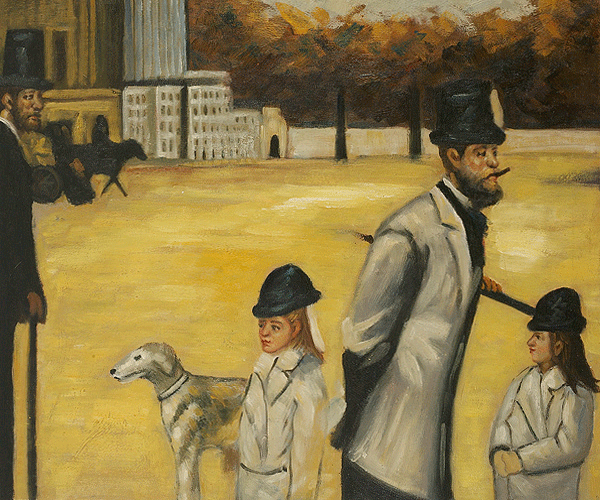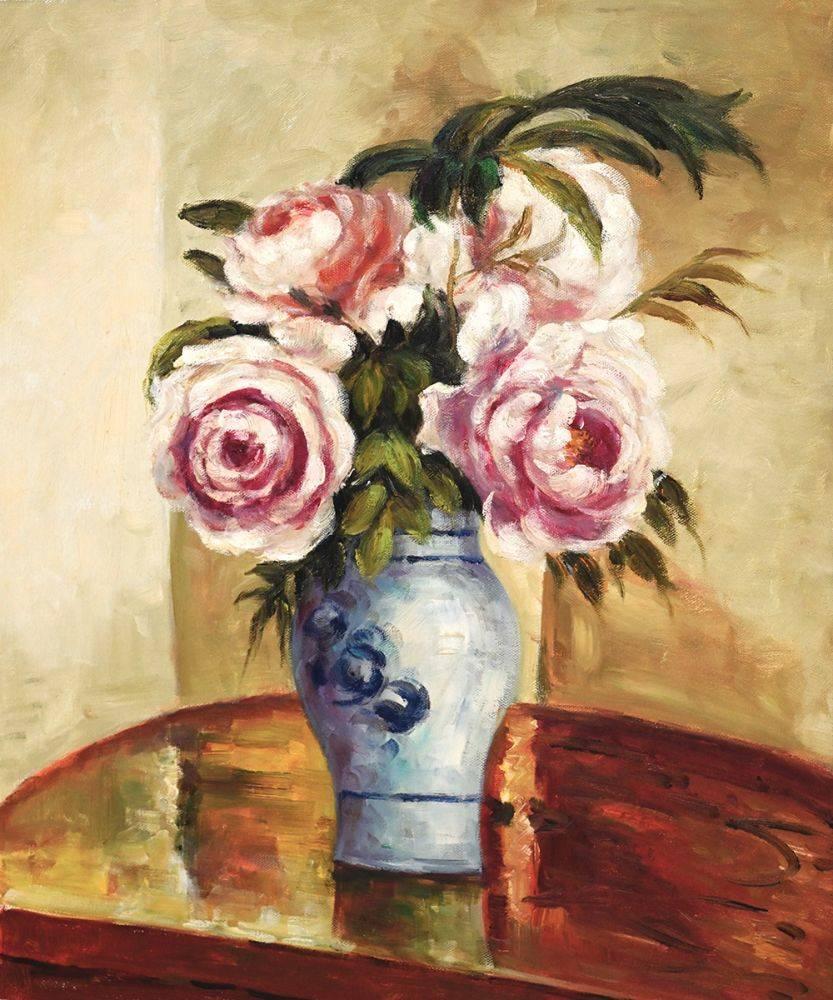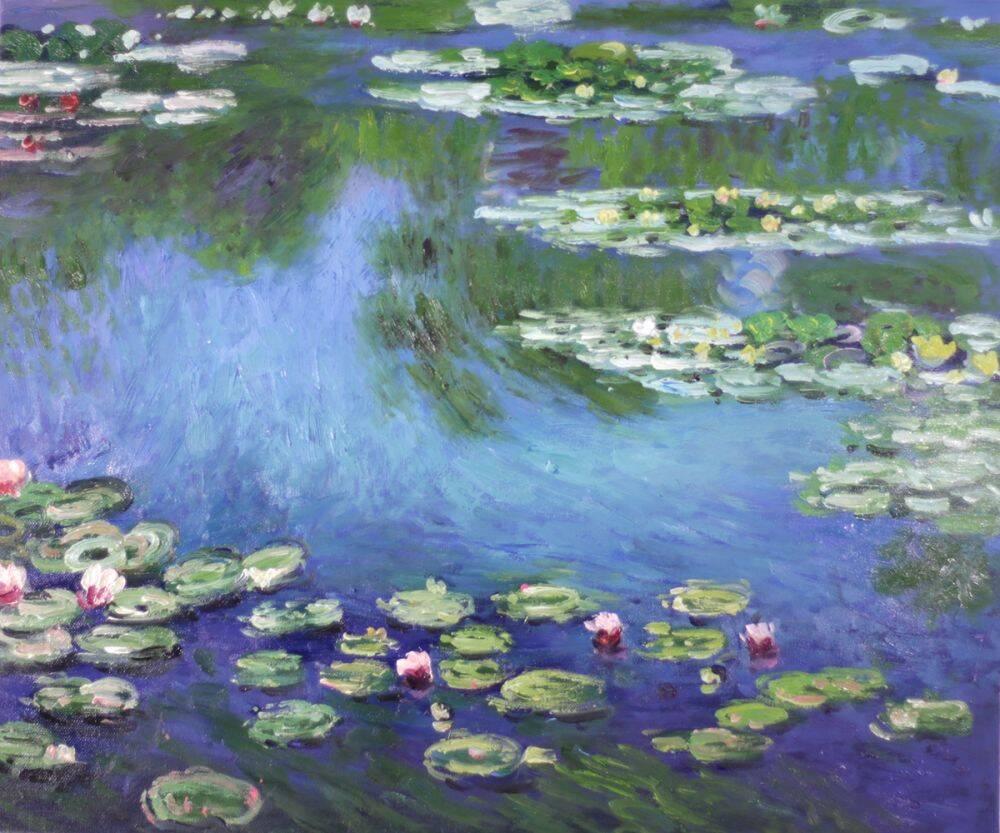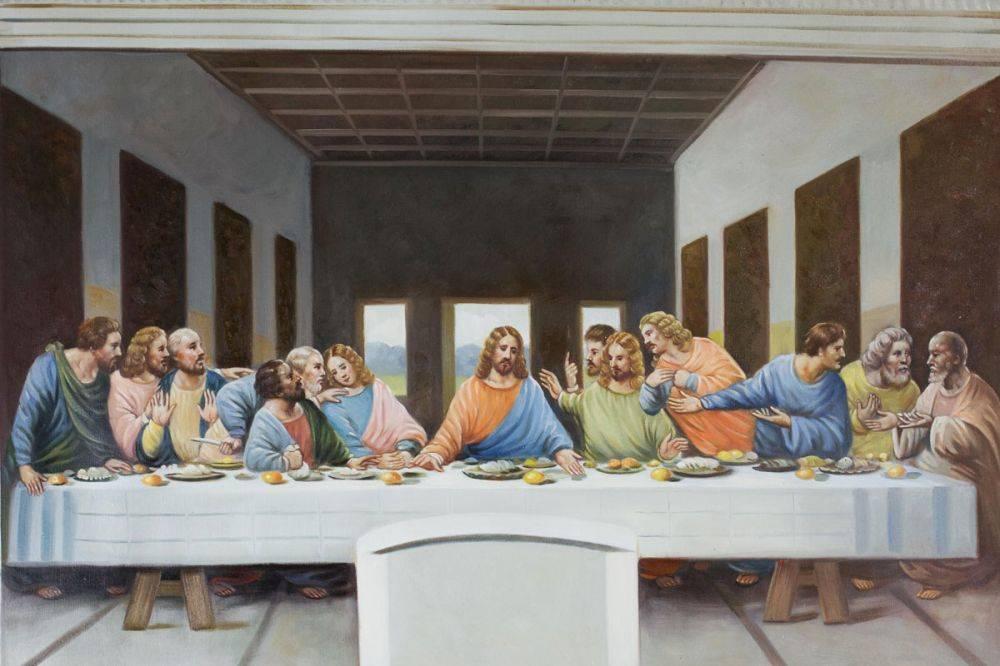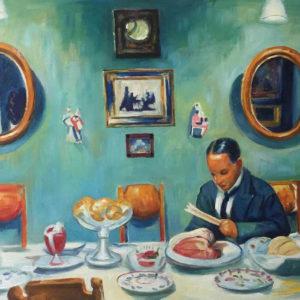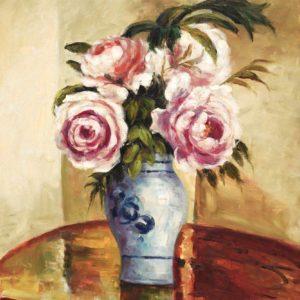Art
Degas Paintings: Strict Arrangement of Spontaneity
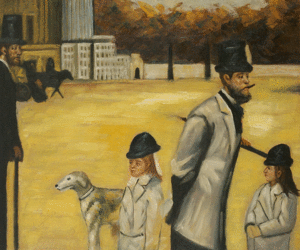 Edgar Degas introduced a revolutionary idea in the 1800s: craving the reality and giving the impression of a spontaneous event. Before Degas, great painters illustrated the characters without leaving aside any part of their body or face. Unlike his predecessors, Degas portrayed parts of a person and made the painting appear like a snapshot.
Edgar Degas introduced a revolutionary idea in the 1800s: craving the reality and giving the impression of a spontaneous event. Before Degas, great painters illustrated the characters without leaving aside any part of their body or face. Unlike his predecessors, Degas portrayed parts of a person and made the painting appear like a snapshot.
Degas wanted to show reality not by confronting it, but by taking a glimpse through the keyhole. The artist thought that the subject’s environment provided the clue to his character. That is why he had begun to place subjects in the atmosphere, by recording images of life in a modern point of view. Degas was using a new approach to composition in order to break with conventions. We can see this approach in the painting “Place de la Concorde,” made in 1876, a portrait of Baron Lepic and his daughters. The person makes a very good impression, and that is accentuated by the mimic of the passer-by. Degas painted only a part of this passer-by. By doing this, he wanted to give us the impression that we take part of a natural activity, surprised by the painter. It proves how acutely Degas’s eye was on the alert for the unanticipated moment. In this painting, the fleeting moment coincides with the artful construction.
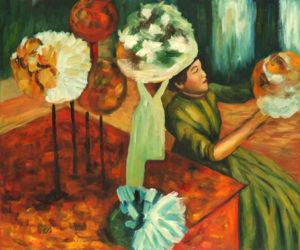 A similar approach we can see in the painting “At the Milliner’s“, which he made in 1882. Degas shows a customer examining herself in a new hat. The Milliner is near her, but we can only see a small part of her. The mirror divides the composition and also runs down Milliner, giving the impression that the hat she holds in her hand is actually suspended in mid-air. Degas lets us see only what he thinks is important for our eyes. He once said “An artist has to be able to cut out a great deal away.” So, the artist doesn’t leave unimportant details in his paintings. Rather, Degas shows part of a subject, in order to let the viewer imagine that person, what he looks like or what he might be doing.
A similar approach we can see in the painting “At the Milliner’s“, which he made in 1882. Degas shows a customer examining herself in a new hat. The Milliner is near her, but we can only see a small part of her. The mirror divides the composition and also runs down Milliner, giving the impression that the hat she holds in her hand is actually suspended in mid-air. Degas lets us see only what he thinks is important for our eyes. He once said “An artist has to be able to cut out a great deal away.” So, the artist doesn’t leave unimportant details in his paintings. Rather, Degas shows part of a subject, in order to let the viewer imagine that person, what he looks like or what he might be doing.
Degas’s paintings can also be called snapshots. He explored subjects from all around, and used visual contexts that implied things far beyond what was in the picture. His approach in painting was inspired by the angle of view in photography. He even tried this new art in the late 1895, when he took a photograph of Renoir and Mallarme. His two subjects had to pose for a quarter of an hour in the light of nine oil lamps.
No art could be less spontaneous than mine. Inspiration, spontaneity, temperament are unknown to me. One has to do the same subject ten times, even a hundred times over. In art, nothing should look like chance, not even movement,” said Degas.
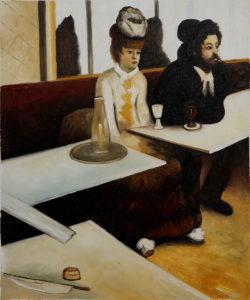 So even if the paintings might look like a surprising reality, in fact, he makes a lot of preperations before finishing one. “The Absinth Drinker” is best known of Degas’s coffee house pictures, and the painting that proves the artist’s theory. The couple’s position and the arrangement of the tables establish the picture as a section of a larger view, as if Degas cropped reality and showed us only a part of it. In fact, the whole painting is a result of numerous calculations, even if it looks like a snapshot. The two characters are actually his friends, copper engraver Marcellin Desboutin and actress Ellen Andree, sat as models for his couple cafe. Thus, Degas proves to be an illusionist in the art field. He makes us believe that he was right there in the cafe, capturing the two personas on canvas, where, in fact, he put two of his friends posing for him in his own workshop.
So even if the paintings might look like a surprising reality, in fact, he makes a lot of preperations before finishing one. “The Absinth Drinker” is best known of Degas’s coffee house pictures, and the painting that proves the artist’s theory. The couple’s position and the arrangement of the tables establish the picture as a section of a larger view, as if Degas cropped reality and showed us only a part of it. In fact, the whole painting is a result of numerous calculations, even if it looks like a snapshot. The two characters are actually his friends, copper engraver Marcellin Desboutin and actress Ellen Andree, sat as models for his couple cafe. Thus, Degas proves to be an illusionist in the art field. He makes us believe that he was right there in the cafe, capturing the two personas on canvas, where, in fact, he put two of his friends posing for him in his own workshop.
Thus, we may say that Degas tries, through his paintings to fool the eye of the beholder. We imagine that the artist is in the middle of the action, trying to capture reality as it is, but instead everything is based on a strict arrangement of the painter. Thus, Degas tries to capture parts of reality, leaving the viewer to imagine the context. The artist succeeds all of this by using photography techniques in painting, and cropping the reality in a calculated manner. So what everything that apperars to be random in Degas’s works is in fact carefully organized.
